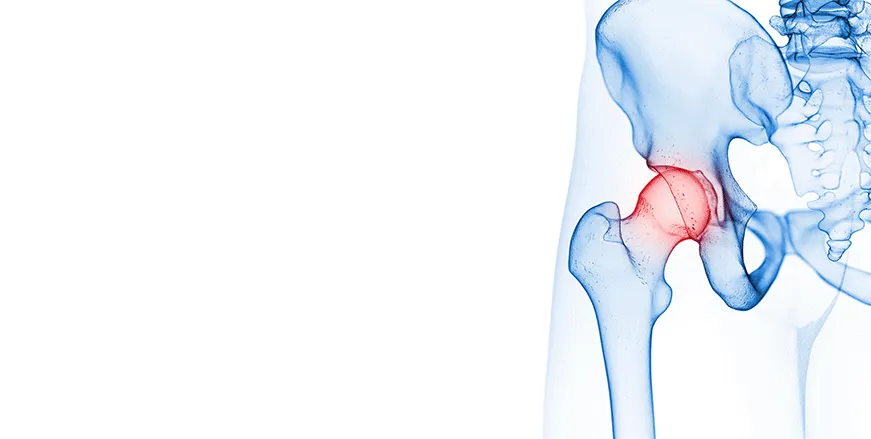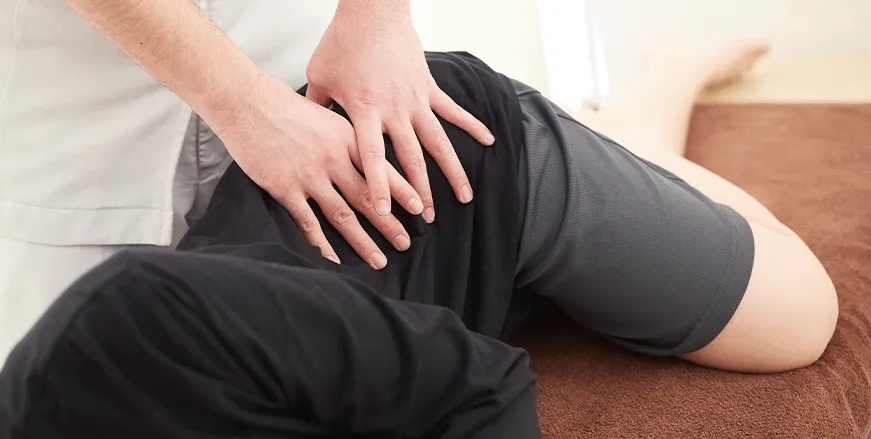Understanding Coxarthrosis: Your Guide to Symptoms, Progression, and Treatment Options

The Journey Towards a Pain-Free Life Begins Here
Are you dealing with persistent hip pain that's affecting your quality of life? If so, you're not alone. With millions facing hip problems like Coxarthrosis worldwide, it's critical to have access to reliable information and care options—especially if you're considering treatment abroad.Through our global network, you're no longer restricted by geographical boundaries. Whether you are dealing with early-stage symptoms or considering surgical intervention, this in-depth guide provides you with everything you need to know.
Understanding Coxarthrosis
Coxarthrosis is the degenerative arthritis of the hip joint, resulting in joint inflammation, pain, and impaired function. With an aging population, the prevalence is increasing. This condition occurs due to the wear and tear of cartilage, the protective layer between your bones, leading to bone-on-bone friction.
Symptoms – Recognizing the Early Warning Signs
Understanding the symptoms is crucial as it can pave the way for early treatment. Some early warning signs include:
- Stiffness: Occasional stiffness that can make activities like sitting for long periods or getting up in the morning challenging.
- Limited Range of Motion: A noticeable decrease in your ability to rotate your hip or perform movements requiring hip flexibility.
- Pain: A persistent ache in the hip, groin, or thigh, which may initially be manageable but grows more severe over time.
These symptoms are your body's way of signaling a problem. Heeding these signs can lead to an earlier diagnosis, which usually results in better outcomes.

Answering the Burning Question—'What are the available treatment options for my condition?
Non-Invasive Treatments:
- Pain Management: Analgesics and anti-inflammatory drugs for pain relief.
- Physical Therapy: Exercises to improve joint flexibility and muscle strength.
- Diet and Lifestyle Changes: Weight loss and a balanced diet can relieve stress on the hip joint.
Surgical Interventions:
- Hip Arthroscopy: Minimally invasive and used for milder cases.
- Hip Resurfacing: Alternative to a complete hip replacement.
- Total Hip Replacement: For severe cases where other treatments have failed.
'Is surgery my only option, or are there alternative treatments?'
Surgery is usually considered a last resort when other treatment modalities have failed to provide relief. Non-invasive approaches like medication, physical therapy, and lifestyle changes are often effective in early stages.
'What are the risks associated with the surgery?'
Surgery, while effective, comes with its own set of risks:
- Infection: Although rare, there’s a chance of post-operative infection.
- Blood Clots: These can form in the leg veins and pose serious risks.
- Nerve Damage: Although unlikely, there is a risk of nerve damage during surgery.
'What kind of physical preparation is required prior to surgery?'
Preparation begins weeks before the actual surgery:
- Medical Check-ups: To evaluate your general health.
- Lifestyle Changes: Ceasing smoking, controlling blood sugar levels, etc.
- Pre-Surgery Exercises: To strengthen muscles around the hip joint.
'What is the expected recovery time?'
Recovery time varies from one patient to another. However, some general timelines include:
- Initial Phase: 4-6 weeks with gradual improvement.
- Intermediate Phase: 3-6 months for a noticeable improvement in mobility.
- Long-Term Recovery: Up to a year for complete rehabilitation.

'What kind of post-operative care will I need?'
Post-operative care plays a pivotal role:
- Physical Therapy: Resumes almost immediately after surgery.
- Follow-Up Appointments: To monitor your progress.
- Home Care: Assistance in daily activities may be necessary initially.
'When can I return to work or regular activities?'
The timeline to return to regular activities varies but generally follows this sequence:
- Desk Jobs: 4-6 weeks post-surgery.
- Physically Demanding Jobs: 3-6 months.
- Sports: Up to 6-12 months, depending on the type of sport and level of competition.
'Should I seek a second opinion?'
Obtaining a second opinion is not just acceptable—it's often advisable, especially when considering something as major as surgery. Multiple perspectives can provide additional insights into the most appropriate course of action tailored to your condition.
A Global Network: Where Quality Care Global Comes into Play
Quality Care Global is designed to be a bridge between you and world-class healthcare, no matter where you are located. For coxarthrosis patients considering surgical options, our network extends to some of the most distinguished orthopedic surgeons across the globe. This means:
- Access to Innovative Procedures: Our partners stay updated on the latest, evidence-based treatments.
- Affordable Treatment Plans: With a range of options, you can select a treatment plan that aligns with your budget without compromising on quality.
- Comprehensive Support: From travel arrangements to post-operative care, Quality Care Global ensures a seamless healthcare experience, personalized to your needs.
Conclusion: Setting a Course for Better Health
Coxarthrosis is a degenerative disease that can seriously impact your quality of life. Yet, with today's medical advancements, particularly in surgical interventions, and a global healthcare network at your fingertips, there's a pathway to better health. Quality Care Global stands by you at every step of that journey, ensuring you make informed decisions that are right for you.
This guide aims to be a comprehensive resource for anyone dealing with coxarthrosis and contemplating surgery. With global healthcare options becoming more accessible, the world is truly your stage for obtaining the best in medical care.
References
Murphy, L., Schwartz, T. A., Helmick, C. G., Renner, J. B., Tudor, G., Koch, G., ... & Jordan, J. M. (2008). Lifetime risk of symptomatic knee osteoarthritis. Arthritis & Rheumatism: Official Journal of the American College of Rheumatology, 59(9), 1207-1213. Brown, T. D., Johnston, R. C., Saltzman, C. L., Marsh, J. L., & Buckwalter, J. A. (2006). Posttraumatic osteoarthritis: a first estimate of incidence, prevalence, and burden of disease. Journal of orthopaedic trauma, 20(10), 739-744. Hootman, J. M., Helmick, C. G., & Barbour, K. E. (2016). Updated projected prevalence of self-reported doctor-diagnosed arthritis and arthritis-attributable activity limitation among US adults, 2015–2040. Arthritis & Rheumatology, 68(7), 1582-1587. Nötzli, H. P., Wyss, T. F., Stoecklin, C. H., Schmid, M. R., Treiber, K., & Hodler, J. (2002). The contour of the femoral head-neck junction as a predictor for the risk of anterior impingement. The Journal of bone and joint surgery. British volume, 84(4), 556-560. Surgery for Coxarthrosis: A Systematic Review. Journal of Orthopaedic Surgery. DOI:10.1177/2309499017692715 "Arthroplasty or Hemiarthroplasty for Hip Fracture" - The New England Journal of Medicine, DOI: 10.1056/NEJMoa1906190 "Intra-articular Corticosteroid for Knee Osteoarthritis" - Cochrane Database of Systematic Reviews, DOI: 10.1002/14651858.CD005328.pub3 "Global treatment guidelines for Coxarthrosis" - World Health Organization (WHO) "Patient-centered care in chronic disease management" - Journal of General Internal Medicine, DOI:10.1007/s11606-017-4210-1

